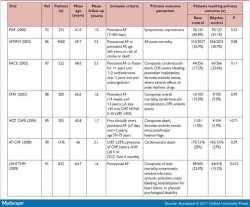Nursing Care Plan for Atrial fibrillation
 Guidelines for the Management of Atrial Fibrillation: ESC
Guidelines for the Management of Atrial Fibrillation: ESC
The below includes the following conditions: Atrial Fibrillation, Decreased Cardiac Output, A-fib, Cardiac Arrhythmia, Dysrhythmia, Irregular Heart Rate, Cardiac Dysrhythmia, Risk For Stroke and Pulmonary Embolism
This care plan is listed to give an example of how a Nurse (LPN or RN) may plan to treat a patient with those conditions.
Important Disclosure: Please keep in mind that these care plans are listed for Example/Educational purposes only, and some of these treatments may change over time. Do not treat a patient based on this care plan.
Care Plans are often developed in different formats. The formatting isn’t always important, and care plan formatting may vary among different nursing schools or medical jobs. Some hospitals may have the information displayed in digital format, or use pre-made templates. The most important part of the care plan is the content, as that is the foundation on which you will base your care.
If you want to view a video tutorial on how to construct a care plan in nursing school, please view the video below. Otherwise, scroll down to view this completed care plan.
Scenario: |
|
An 86 year old female presents to the ER with complaints of heart palpitations since yesterday morning. Pt states she feels like her heart is going to pop out of her chest. Pt states she has a history of irregular heart rate and was in the hospital two months for the same thing. On assessment, pt’s radial pulse is irregular and hard to count. Pt is placed on an EKG monitor and is found to be in Atrial Fibrillation with rapid ventricular response. Pt heart is 130-160s, BP 108/73, O2 Saturation is 98% on RA. Pt states that she takes Cardizem 30mg PO Daily, Coreg 3.25mg PO BID, and Coumadin 2.5 mg PO Daily. However, pt states she hasn’t been able to afford her prescription of Cardizem this month and ran out of the medication three days ago. Lab and Diagnostic work shows: INR-2.3, Troponin level |
The journal is indexed and abstracted in: Academic...



